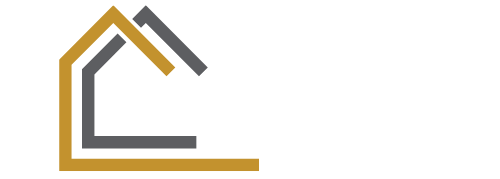In today’s fast-paced world, the dream of homeownership often feels out of reach for many. Rising prices and stagnant wages have created a challenging landscape, leaving potential buyers searching for affordable homes that fit their budgets. The need for accessible housing has never been more critical, as families seek stability and a place to call their own.
Affordable homes aren’t just a financial necessity; they also play a vital role in fostering vibrant communities. By providing options that cater to diverse income levels, cities can ensure that everyone has the opportunity to thrive. This article explores the current state of affordable housing, the challenges faced, and innovative solutions that can pave the way for a brighter future in homeownership.
Table of Contents
ToggleOverview of Affordable Homes
Affordable homes represent a critical need for many families across the United States. Defined as housing options that meet the financial constraints of low to moderate-income households, these homes typically cost no more than 30% of a household’s gross income. The goal is to ensure that families allocate sufficient resources toward other essential needs like education, healthcare, and transportation.
The landscape of affordable housing varies significantly by region. Urban areas often face heightened demand due to population density, which drives prices higher. In contrast, rural regions might offer lower housing costs but may lack access to necessary services and job opportunities. Various housing types, including single-family homes, duplexes, and apartments, contribute to this market.
Government programs and regulations play a pivotal role in the availability of affordable homes. Initiatives like the Low-Income Housing Tax Credit (LIHTC) incentivize developers to create affordable units. Additionally, public-private partnerships often emerge to facilitate the construction and management of these properties, addressing the housing crisis efficiently.
Nonprofit organizations also contribute by providing resources and education to potential homeowners. They assist families with understanding financing options, navigating the homebuying process, and accessing down payment assistance programs.
Challenges persist in the realm of affordable housing. Developers encounter rising construction costs, local zoning policies, and land availability issues. These obstacles can hinder the influx of new units into the market. Furthermore, maintaining affordability while ensuring quality construction remains a critical balance for stakeholders. Addressing these challenges requires ongoing collaboration between government entities, nonprofits, and the private sector to create sustainable solutions.
Innovative approaches are gaining traction, including co-housing models and community land trusts. These solutions aim to enhance accessibility while fostering community engagement and support.
The foundation of affordable housing continues to evolve as the market adapts to the changing needs of households. Ensuring access to affordable homes remains essential for building stable communities, supporting economic growth, and enhancing overall quality of life.
Benefits of Affordable Homes

Affordable homes provide significant advantages for individuals and communities, enhancing economic stability and fostering development.
Economic Impact
Affordable homes empower families, allowing them to allocate funds to essentials like education and healthcare, rather than excessive housing costs. When households secure affordable housing, they contribute to local economies by spending on goods and services. Additionally, affordable housing initiatives stimulate job creation in construction and related industries, promoting economic growth. With lower housing costs, residents can save for the future, reducing dependence on social support systems.
Community Development
Affordable homes strengthen communities by encouraging diversity and inclusivity. They attract a wide range of residents, including low to moderate-income families, contributing to vibrant neighborhoods. Accessible housing options enhance community stability, reducing turnover rates and fostering connections between residents. Furthermore, affordable homes promote local investment in infrastructure and services, resulting in improved access to schools, public transportation, and healthcare facilities. Stronger neighborhoods benefit from increased social cohesion, creating environments where residents thrive.
Types of Affordable Homes
Affordable homes come in various forms, catering to diverse needs and preferences. Understanding these types can help potential homeowners identify the best options available.
Subsidized Housing
Subsidized housing includes government-assisted programs that lower living costs for qualifying families. This form often takes the shape of public housing developments or vouchers, such as the Housing Choice Voucher program, which helps families pay rent in private housing. Income limits vary by location, but the aim remains constant: providing affordable living spaces to households earning low to moderate incomes. Participating in these programs connects individuals with resources, creating a pathway to stable housing and community support.
Manufactured Homes
Manufactured homes represent an affordable option for many buyers, as they typically cost less than traditional site-built houses. Constructed in factories and transported to their permanent locations, these homes allow for speedy construction and reduced labor costs. While they come in different sizes and styles, affordability often stems from lower land expenses and efficient building methods. Many manufacturers offer customizable layouts, allowing buyers to tailor their homes to fit their needs. Living in manufactured home communities can also create a sense of belonging among residents.
Tiny Homes
Tiny homes provide an innovative solution for affordable living, emphasizing efficiency and minimalism. These compact dwelling units usually span less than 400 square feet, offering an alternative to traditional housing models. Their smaller size results in lower purchase prices and reduced utility costs. Many tiny homes are designed for mobility, allowing owners to travel and relocate as desired. This lifestyle appeals to those seeking financial freedom, encouraging sustainable living choices while fostering community through shared spaces and experiences.
Locations for Affordable Homes
Determining the best locations for affordable homes involves considering factors like community resources, proximity to employment, and cost of living. Both urban and rural areas offer unique advantages and challenges.
Urban Areas
Urban areas often face higher demand for affordable homes due to job opportunities and amenities. Cities can provide government programs and incentives aimed at increasing affordable housing stock. Examples include New York City and San Francisco, where various initiatives support income-restricted housing. However, rising property values and construction costs present significant barriers.
To counteract these issues, cities are implementing zoning changes to allow for more multi-family units. For instance, Minneapolis has embraced legislation that encourages diverse housing options. Additionally, nonprofit organizations work to create and preserve affordable living spaces, contributing to community development and social cohesion.
Rural Areas
Rural areas typically offer lower housing costs, presenting an appealing option for those seeking affordable homes. Locations such as parts of the Midwest and South showcase more accessible real estate markets. These areas often feature programs that facilitate homeownership for low to moderate-income families.
Residents in rural communities may benefit from government initiatives aimed at developing infrastructure and services, enhancing overall livability. However, challenges remain, such as limited job opportunities and access to essential services. Community efforts focused on development can support economic growth and promote sustainable living. Programs like the USDA Rural Development provide funding for affordable housing projects, assisting families in becoming homeowners.
Challenges in Finding Affordable Homes
Finding affordable homes presents several challenges due to various external factors that impact availability and accessibility.
Market Demand
Market demand significantly influences the affordability of homes. Increased interest from investors and affluent buyers drives up prices, making it difficult for low to moderate-income households to compete. The rising demand in urban areas creates a gap between available housing and the needs of families seeking stable, affordable options. According to the National Association of Realtors, housing shortages impact nearly 80% of metropolitan areas, exacerbating the struggle for affordable options.
Zoning Regulations
Zoning regulations impose restrictions that can hinder the development of affordable housing. Many local governments prioritize single-family zoning, limiting the construction of multifamily units, which could alleviate housing shortages. Inflexible zoning laws often prevent innovative designs, such as tiny homes or cooperative housing, from being realized. A study by the Urban Institute shows that cities with more flexible zoning can increase affordable housing supply by up to 25%, demonstrating the critical need for policy reform to support affordable home development.
Affordable homes are vital for fostering stable communities and supporting economic growth. The ongoing challenges in homeownership highlight the necessity for innovative solutions and collaborative efforts among various stakeholders. As families seek stability and accessibility, understanding the diverse types of affordable housing options can empower them to make informed decisions.
With the right policies and community engagement, the path to affordable housing can become clearer. By prioritizing sustainable development and addressing zoning issues, it’s possible to create environments where everyone has the opportunity to thrive. The future of affordable homes lies in continued advocacy and commitment to making housing accessible for all.




